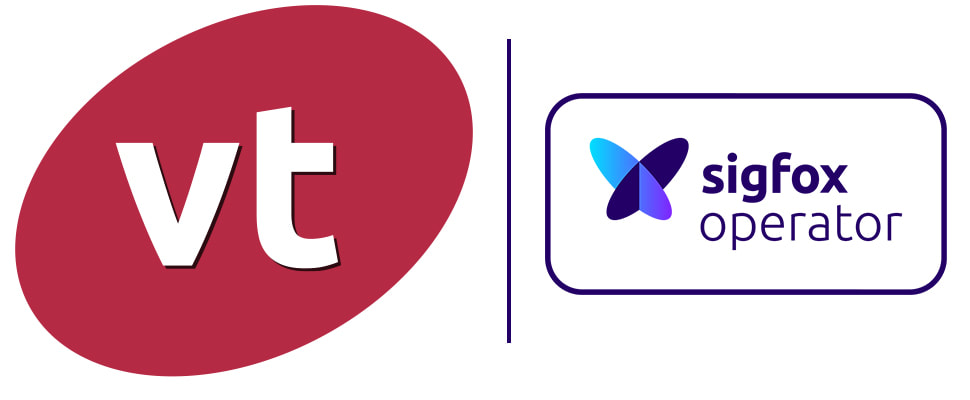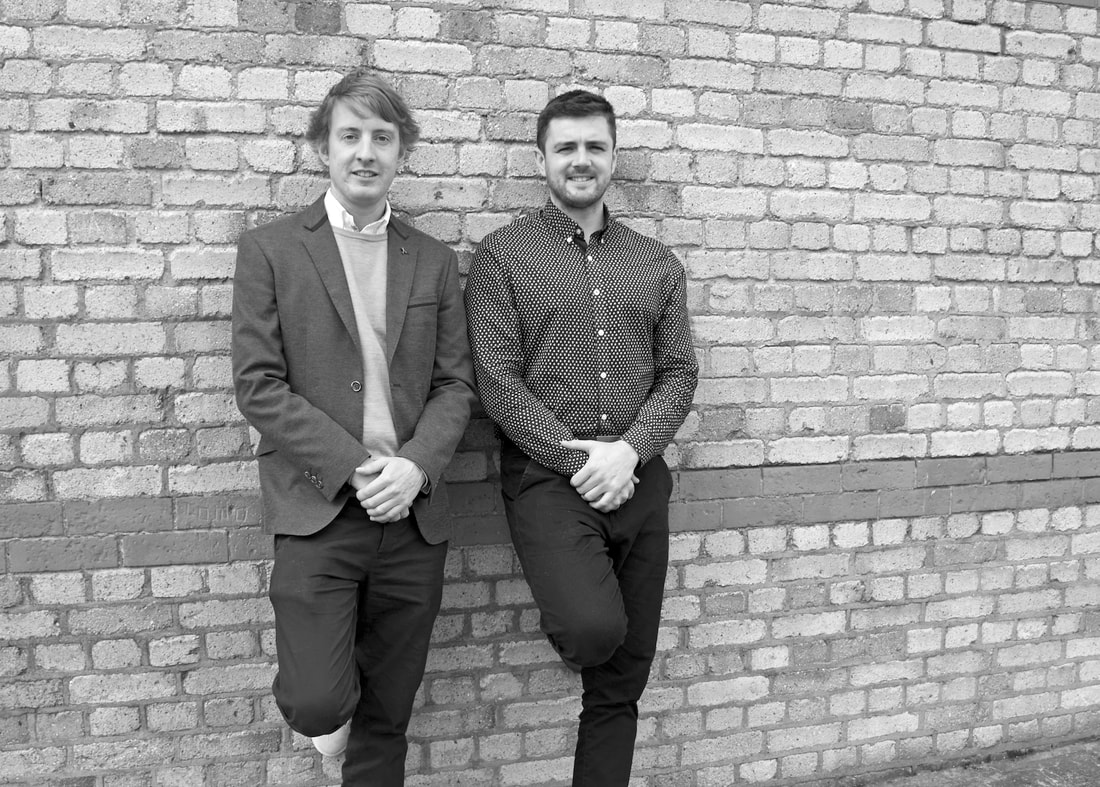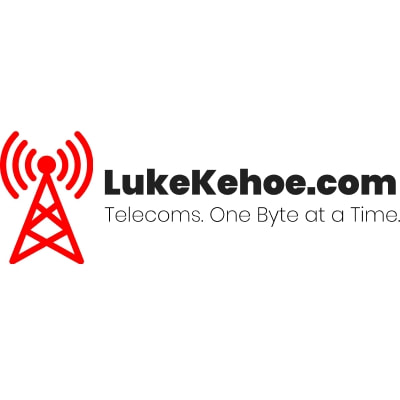An Interview with the man building Ireland's largest IoT network: Will Ferguson
Blurring the divide between the physical and digital world is no small feat.
Published 15/11/18
Can you briefly explain who you are and what you do?
I’m one of the founders of VT. The company was set up by myself and Mark Bannon four years ago. VT is the Sigfox IoT network operator in Ireland. Sigfox is the world’s leading Low Power Wide Area Network (LPWAN) built to collect small messages from billions of devices in the physical world. It’s the first ‘Internet of Things’ network in Ireland that’s nationwide, being specifically designed to connect simple objects, sensors and ‘things’ at a very low cost, consuming as little energy as possible. We are part of a group of fifty counties that have rolled out this technology.
We also have a subsidiary, VT Solutions, that specialises in providing turnkey IoT solutions (hardware + software + connectivity) to the global market. VT Solutions is technology agnostic and provides the best solution for each customer use case.
We also have a subsidiary, VT Solutions, that specialises in providing turnkey IoT solutions (hardware + software + connectivity) to the global market. VT Solutions is technology agnostic and provides the best solution for each customer use case.
Why did you set up VT IoT, and what is your goal for the company?
VT was set up because we spotted a gap in the market for low power, low cost, pervasive connectivity that’s essential to enable the idea that everything in the physical world around us, will be connected to the digital world in the future. Even the simplest of things.
Until recently, device makers had a limited number of options to connect the simplest objects, sensors and things to the cloud. In the past, a choice would have to be made to use one of the traditional technologies like Wi-Fi, Bluetooth or cellular. While these are great technologies, they have drawbacks when connecting what’s going to make up a large portion of the IoT market: devices that need to send simple data. Wi-Fi and Bluetooth require gateways, so they aren’t fully pervasive, and cellular is overkill in terms of cost and power consumption.
We first discovered the Sigfox technology when it was in its infancy. It was only available in four countries but it immediately made sense. While the other connectivity technologies were focused on gathering billions of bytes of data from a small number of high-tech devices, the Sigfox technology was focused on doing the opposite: gathering tiny amounts of data from billions of simple devices. We quickly realised the opportunity of bringing the technology to Ireland.
Our goal now is to connect one million devices on our network in Ireland by 2022.
Until recently, device makers had a limited number of options to connect the simplest objects, sensors and things to the cloud. In the past, a choice would have to be made to use one of the traditional technologies like Wi-Fi, Bluetooth or cellular. While these are great technologies, they have drawbacks when connecting what’s going to make up a large portion of the IoT market: devices that need to send simple data. Wi-Fi and Bluetooth require gateways, so they aren’t fully pervasive, and cellular is overkill in terms of cost and power consumption.
We first discovered the Sigfox technology when it was in its infancy. It was only available in four countries but it immediately made sense. While the other connectivity technologies were focused on gathering billions of bytes of data from a small number of high-tech devices, the Sigfox technology was focused on doing the opposite: gathering tiny amounts of data from billions of simple devices. We quickly realised the opportunity of bringing the technology to Ireland.
Our goal now is to connect one million devices on our network in Ireland by 2022.
Can you give us an insight into your vision for the future of the IoT and connected devices?
The IoT market is in its infancy. It’s only a matter of time before we will see mass adoption with everything in the physical world around us, connected to the digital world. The big question is when? It hasn’t taken off as quickly as the analysts may have thought, and that’s for a number of different reasons; for example, the availability of low-cost hardware, connectivity options like Sigfox didn’t exist, immature device market etc. Significant strides have been made in the last few years and many of the underlying problems have been solved. I believe within the next three years to five years we will see significant mass adoption of the IoT. We will start seeing a large portion of products produced on the factory floors globally coming with embedded connectivity - even the simplest of things like doors, chairs and everything in between.
I think the future of low power IoT will be dominated by devices that will be completely autonomous and never need any intervention. You have to remember that the business case for connecting the majority of the IoT is extremely sensitive. A technician having to change the batteries on a large deployment of devices even after a five or ten year period could easily kill the business case. We are now seeing the introduction of low-cost devices that harvest energy through solar, movement and heat, meaning the batteries never need to be changed on a device. This is opening up a whole range of use cases that didn’t make sense in the past.
I think the future of low power IoT will be dominated by devices that will be completely autonomous and never need any intervention. You have to remember that the business case for connecting the majority of the IoT is extremely sensitive. A technician having to change the batteries on a large deployment of devices even after a five or ten year period could easily kill the business case. We are now seeing the introduction of low-cost devices that harvest energy through solar, movement and heat, meaning the batteries never need to be changed on a device. This is opening up a whole range of use cases that didn’t make sense in the past.
How has your company evolved since its inception and in what ways has that impacted you?
For our first couple of years of operation, we were very focused on rolling out our nationwide LPWAN network as quickly as possible. Thanks to our partnership with the State broadcasting infrastructure provider, 2RN, we were able to do this quickly. We managed to build the nationwide network that gave 94% (area) nationwide coverage in less than two years. That’s a very short period when you compare it to the length of time it took to build out the traditional cellular networks in Ireland.
At the same time as we were building the network, we focused on developing the ecosystem here in Ireland and evangelising the technology.
While talking with lots of different companies we realised that large corporations were not really interested in the actual connectivity technology, but more the full turnkey solution. It became very apparent that we needed to be able to offer the full solution to many of our customers, and given our knowledge, expertise and access to a vibrant global ecosystem, we are in a very good position to be able to deliver this directly, or with our ecosystem partners.
We now have a division that offers customers turnkey IoT solutions as well as consulting services to advise customers on IoT strategy.
At the same time as we were building the network, we focused on developing the ecosystem here in Ireland and evangelising the technology.
While talking with lots of different companies we realised that large corporations were not really interested in the actual connectivity technology, but more the full turnkey solution. It became very apparent that we needed to be able to offer the full solution to many of our customers, and given our knowledge, expertise and access to a vibrant global ecosystem, we are in a very good position to be able to deliver this directly, or with our ecosystem partners.
We now have a division that offers customers turnkey IoT solutions as well as consulting services to advise customers on IoT strategy.
If you had to choose, which industry are you most excited to see the use cases of the IoT implemented?
That’s a tough question as the IoT is going to be a game changer for almost every industry, for sure. Within the verticals that VT is focusing on, I’m really excited about the logistics and asset tracking market.
We are now at a stage where it makes sense to track even the lowest cost assets and elements within a supply chain. For example, we are now able to track cages and trolleys that can have a value of under €100 and the business case still makes sense. A simple, low cost, heavy duty tracker can be attached to the asset without any intervention for over ten years. That’s real IoT!
We are now at a stage where it makes sense to track even the lowest cost assets and elements within a supply chain. For example, we are now able to track cages and trolleys that can have a value of under €100 and the business case still makes sense. A simple, low cost, heavy duty tracker can be attached to the asset without any intervention for over ten years. That’s real IoT!
In your opinion, what are the most profound barriers that exist today which are hampering the growth of the IoT, and how is the industry tackling this?
I think the main barrier to the growth of the IoT until recently has been the cost of the hardware. IoT is about enabling the billions of ‘things’ in the physical world around us, so they are connected to the digital world. The majority of use cases are very sensitive to cost. The IoT will only reach critical mass adoption when the cost of connecting something to the cloud is so low that the question becomes; why aren’t we connecting this device to the cloud?
Until very recently the cost of the hardware modules for long-range wireless technologies was simply too high to enable mass connectivity. For example, 3G modules are $20+, 2G modules $12+, and NB-IoT modules $10+. Even unlicensed technologies like Sigfox and LoRa were around the $8+ mark. This kind of hardware pricing killed the business case for many applications.
Then we had a breakthrough nearly eighteen months ago. Sigfox module vendors reduced the cost of Sigfox enabled modules to between $2 and $3 starting price. They were able to do this because unlike the traditional cellular technologies, Sigfox doesn’t charge any royalties. This was a game changer. The hardware cost is no longer a barrier to entry. Removing this barrier has already transformed the LPWAN part of the IoT landscape. This is sure to have a knock-on effect to other technologies over time.
Until very recently the cost of the hardware modules for long-range wireless technologies was simply too high to enable mass connectivity. For example, 3G modules are $20+, 2G modules $12+, and NB-IoT modules $10+. Even unlicensed technologies like Sigfox and LoRa were around the $8+ mark. This kind of hardware pricing killed the business case for many applications.
Then we had a breakthrough nearly eighteen months ago. Sigfox module vendors reduced the cost of Sigfox enabled modules to between $2 and $3 starting price. They were able to do this because unlike the traditional cellular technologies, Sigfox doesn’t charge any royalties. This was a game changer. The hardware cost is no longer a barrier to entry. Removing this barrier has already transformed the LPWAN part of the IoT landscape. This is sure to have a knock-on effect to other technologies over time.
Describe some of your greatest challenges as a co-founder of an IoT provider in Ireland.
I think the greatest challenge so far has been to remain patient. The IoT is going to have a massive impact on almost every industry. Mass adoption will happen. But this will take time. Lots of elements need to be in place for the IoT to explode. While the industry has made good progress over the last few years, we still have some way to go. It takes even the best companies with lots of resources between eighteen and twenty-four months to bring an IoT product to market. This is the nature of the industry and everyone needs to be patient. Ireland is no different. It will happen but it will take time!
List two of your favourite gadgets, and why?
Invoxia GPS asset tracker: it's small, slick and great design. You also get a couple of months of battery life which is great. I love this product and use it all the time.
Pipletz Home security system: I really like this. It's a wireless, self-install home security system that costs less than €200. It comes with door and window sensors and a camera. The smartphone app allows you to monitor your home from anywhere in the world and you don’t need to pay expensive monitoring fees.
Pipletz Home security system: I really like this. It's a wireless, self-install home security system that costs less than €200. It comes with door and window sensors and a camera. The smartphone app allows you to monitor your home from anywhere in the world and you don’t need to pay expensive monitoring fees.
VT IoT provides a network for the IoT, do you see yourselves as a telecoms company in the traditional sense?
I think the idea of the traditional telecoms company is dead. For the IoT, end customers no longer want to just buy connectivity. In many cases, they want to buy an all-encompassing IoT solution (hardware, software, and connectivity). The traditional telecoms companies are realising this, and they are trying to transform into solution providers rather than just sim card shifters. For large telecoms companies, this can be a painstakingly slow process as it’s a complete change in how they operate.
With VT, we were lucky as we were able to implement this from conception. Our core strength is solution selling and we have lots of experience providing customers with turnkey IoT solutions. We work closely with our ecosystem of partners to deliver the best in class solutions to customers here in Ireland.
With VT, we were lucky as we were able to implement this from conception. Our core strength is solution selling and we have lots of experience providing customers with turnkey IoT solutions. We work closely with our ecosystem of partners to deliver the best in class solutions to customers here in Ireland.
Going forward, what are some of the trends which will shape your industry?
The introduction of energy harvesting hardware will be a game changer for the LPWAN market. Devices will be able to create sufficient power to work autonomously without the need to ever change the batteries. Like the introduction of low-cost communications modules, this will enable lots of new business cases for the IoT.
Another trend that we are already seeing is the use of dual technology devices. Each technology has its benefits and drawbacks. You will never find one particular technology or connectivity that fits every business case. Within VT, we already have lots of devices that use Sigfox, Bluetooth, Wi-Fi, and GPS all in the same solution. We are also now seeing the introduction of devices that use both Sigfox and NB-IoT, making use of the positive attributes of both technologies in the same application.
Another trend that we are already seeing is the use of dual technology devices. Each technology has its benefits and drawbacks. You will never find one particular technology or connectivity that fits every business case. Within VT, we already have lots of devices that use Sigfox, Bluetooth, Wi-Fi, and GPS all in the same solution. We are also now seeing the introduction of devices that use both Sigfox and NB-IoT, making use of the positive attributes of both technologies in the same application.
Which upcoming technologies are you most excited about and why?
I’m looking forward to seeing the use of satellite technology mixed with LPWAN technology. This innovation will allow us to provide connectivity to even the most remote areas of the globe. Again, it will open up even more exciting use cases. For example, smart life jackets that can be tracked anywhere in the world at an ultra-low cost.
How has your understanding of technology, and more specifically, the IoT, developed with time?
Like every job you can’t stand still, and you need to be constantly learning and improving your knowledge. The IoT encompasses almost everything. It's impossible to be an expert in every facet of the IoT as the space is vast, and constantly developing with new innovations.
I spend a lot of time learning about new solutions and innovations.
Every day I’m learning something new in the industry and that’s what makes it exciting. Every customer is different. They have a different problem and a different business case. Different technologies will help different customers so it's extremely important to try and have a good understanding of everything that’s available now, and anything that may be coming down the line.
The big learning over time is that the most important place to start with our customers is assessing the business case. Only after we establish a business case do we deep dive into the appropriate IoT solution (if any).
I spend a lot of time learning about new solutions and innovations.
Every day I’m learning something new in the industry and that’s what makes it exciting. Every customer is different. They have a different problem and a different business case. Different technologies will help different customers so it's extremely important to try and have a good understanding of everything that’s available now, and anything that may be coming down the line.
The big learning over time is that the most important place to start with our customers is assessing the business case. Only after we establish a business case do we deep dive into the appropriate IoT solution (if any).







